Welding has been a crucial part of automotive manufacturing since the invention of the automobile. However, as the demand for off-road and performance vehicles has grown, so has the need for advanced welding techniques.
Tungsten Inert Gas (TIG) welding has become a go-to method for welding these vehicles due to its ability to produce clean, precise welds that are both strong and visually appealing.
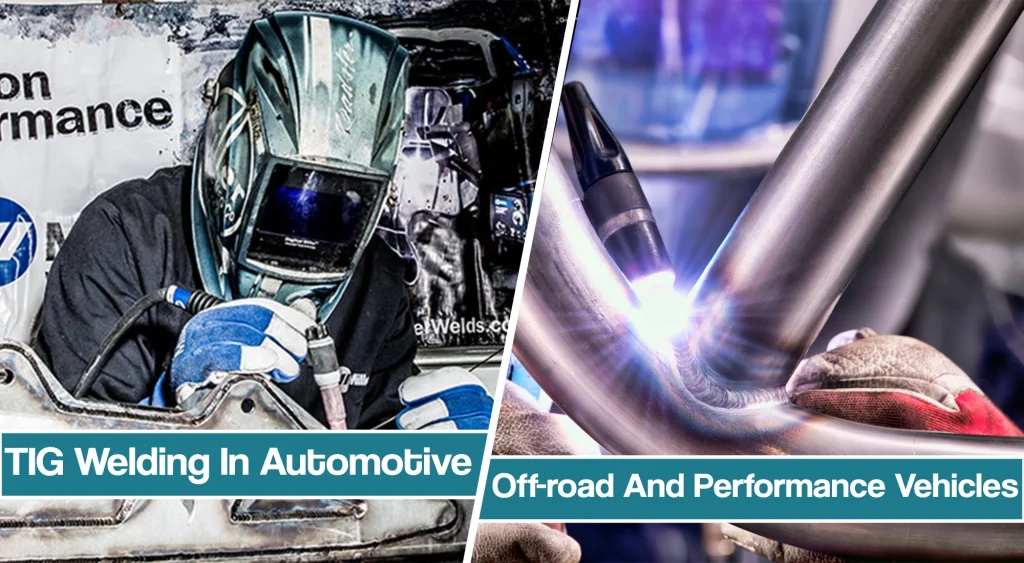
TIG welding is a process that requires great skill and precision, and the welders who specialize in it are in high demand. In this article, we will delve into the world of TIG welding for off-road and performance vehicles, and explore the techniques and challenges that come with this specialized field.
Importance and advantages of TIG welding in the modern automotive industry
Tungsten Inert Gas (TIG) welding is a critical process in modern automotive manufacturing due to its many advantages over other welding techniques. TIG welding produces clean, precise welds that are strong, durable, and visually appealing. This makes it an ideal choice for welding high-performance and off-road vehicles that require strong, reliable welds.
One of the main advantages of using a TIG Welder is its ability to create welds without the need for additional materials, such as filler metal or flux.
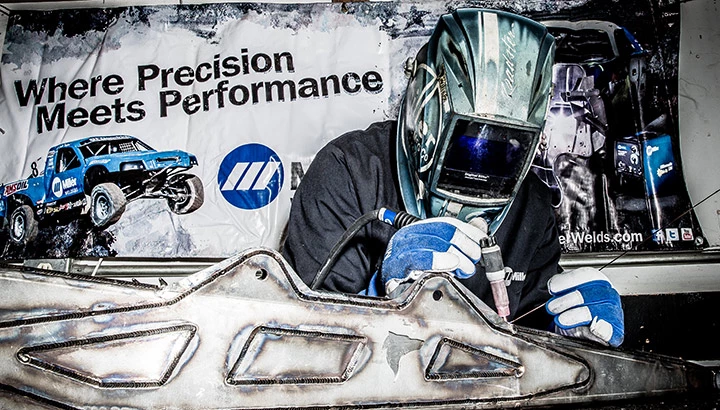
This results in a clean and smooth weld that does not require much post-welding cleanup, saving time and money in the manufacturing process. TIG welding also allows for precise control of the heat input, which reduces the risk of warping or distortion in the welded parts, leading to a more accurate fit and finish.
TIG welding also offers high-quality welds that are both strong and aesthetically pleasing. Welds produced with TIG welders have a narrow bead profile, which results in a clean and uniform appearance. This is particularly important in the automotive industry, where aesthetics play a crucial role in vehicle design and customer satisfaction.
Finally, TIG welding is suitable for welding a wide range of materials, including aluminum, stainless steel, and other exotic metals commonly used in high-performance vehicles. This versatility makes it an essential tool in modern automotive manufacturing, allowing for the production of high-quality vehicles that meet the demands of modern consumers.
Common Metals in TIG Welding For Off-road and Performance Vehicles
Welders encounter a variety of metals when welding off-road and performance vehicles, including steel, aluminum, titanium, and other exotic alloys. Each metal has its unique properties and requires different welding techniques and approaches to achieve strong and durable welds.
- Steel is the most common metal used in the automotive industry due to its strength, durability, and affordability. TIG welding is an excellent choice for welding steel as it allows for precise control of the heat input, resulting in clean and strong welds.
- Aluminum is another popular metal used in high-performance vehicles due to its lightweight and strength-to-weight ratio. However, welding aluminum can be challenging due to its high thermal conductivity, which can result in a lack of fusion or incomplete welds. TIG welding is ideal for welding aluminum as it allows for precise control of the heat input, which reduces the risk of overheating and results in strong, uniform welds.
- Titanium is another exotic metal used in high-performance vehicles due to its lightweight and high strength-to-weight ratio. TIG welding is an excellent choice for welding titanium due to its precise heat control and ability to produce clean, high-quality welds.
- Other exotic alloys used in the automotive industry, such as Inconel and Hastelloy, are also suitable for TIG welding due to their high corrosion resistance and ability to withstand high temperatures.
TIG Welding Engine Parts Of Off-road And Performance Vehicles
Tungsten Inert Gas (TIG) welding is a popular method for welding engine parts in off-road and performance vehicles. TIG welding is ideal for welding engine parts as it produces clean and precise welds that are strong, durable, and visually appealing.
When welding engine parts, TIG welding is often used to weld exhaust headers, intake manifolds, and other parts that require precise, high-quality welds.
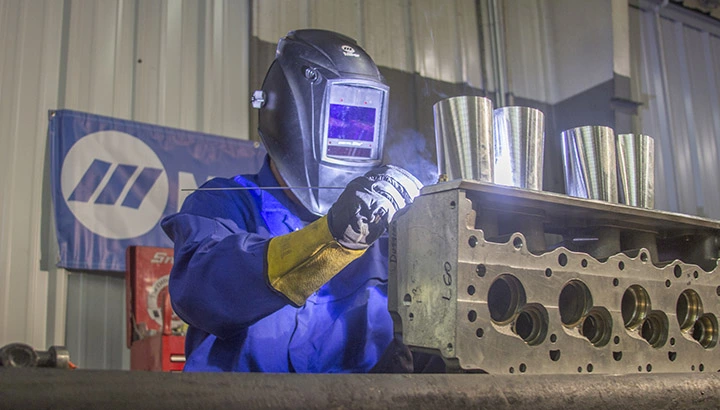
TIG welding allows for precise control of the heat input, which is essential when welding engine parts that are subjected to high temperatures and stresses. The ability to precisely control the heat input ensures that the welds are strong and do not become brittle or crack under stress.
TIG welding is also ideal for welding engine parts made of aluminum or other exotic alloys commonly used in high-performance vehicles. Aluminum, in particular, can be challenging to weld due to its high thermal conductivity and tendency to warp. TIG welding allows for precise control of the heat input, which reduces the risk of warping and ensures that the welds are strong and uniform.
TIG Welding Exhaust And Cooling
TIG welding is also ideal for welding exhaust and cooling systems because it produces clean, high-quality welds that are aesthetically pleasing. This is particularly important in the automotive industry, where aesthetics play a crucial role in vehicle design and customer satisfaction.
When welding exhaust systems, TIG welding is often used to weld the header tubes and the flanges that connect the tubes to the engine.
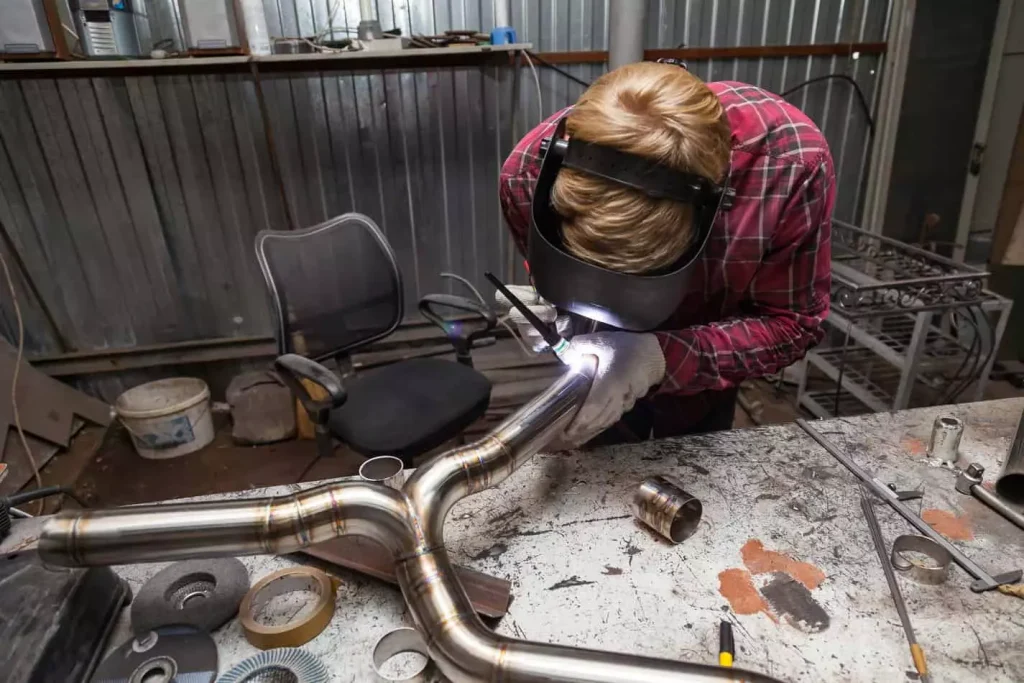
TIG welding allows for precise control of the heat input, which is essential when welding thin-walled tubing. The ability to precisely control the heat input ensures that the welds are strong and do not become brittle or crack under stress.
When welding cooling systems, TIG welding is often used to weld the aluminum radiator, intercooler, or other parts made of aluminum or other exotic alloys commonly used in high-performance vehicles. Aluminum can be challenging to weld due to its high thermal conductivity and tendency to warp. TIG welding allows for precise control of the heat input, which reduces the risk of warping and ensures that the welds are strong and uniform.
TIG Welding In Chassis Fabrication
Chassis fabrication involves welding together the frame of the vehicle, which supports the engine, suspension, and body. When welding the chassis, TIG welding is often used to weld thin-walled tubing or sheet metal that makes up the frame of the vehicle. TIG welding allows for precise control of the heat input, which is essential when welding thin materials. The ability to precisely control the heat input ensures that the welds are strong and do not become brittle or crack under stress.
TIG welding is also ideal for chassis fabrication because it produces clean, high-quality welds that are aesthetically pleasing.
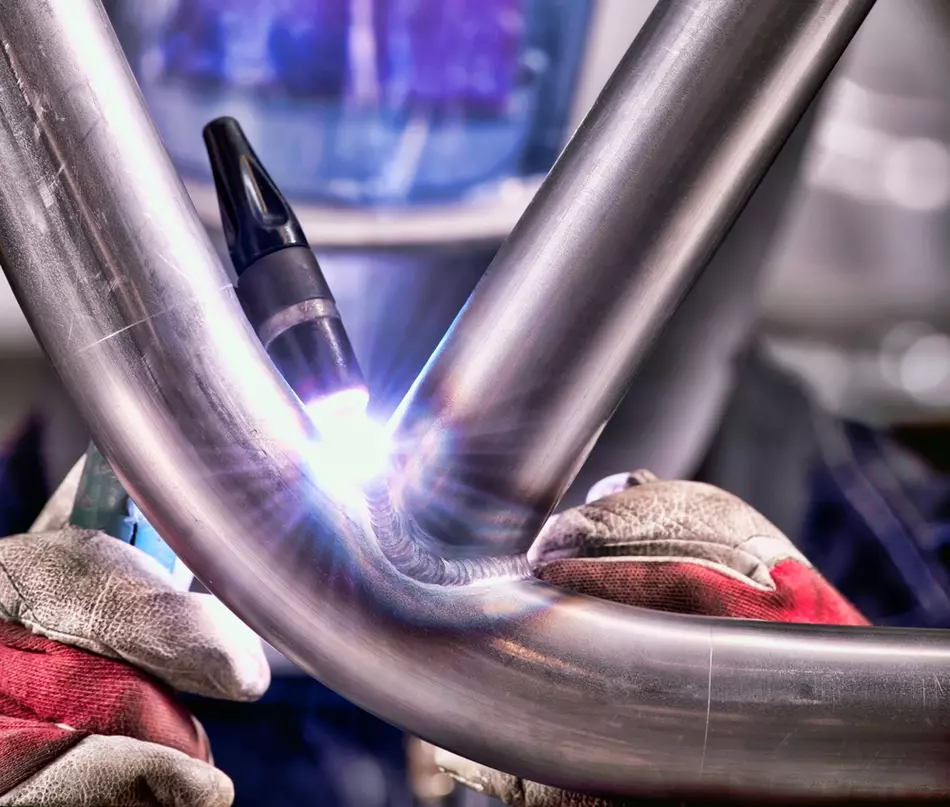
This is particularly important in the automotive industry, where aesthetics play a crucial role in vehicle design and customer satisfaction. In addition to its ability to produce strong, precise welds, TIG welding also allows for excellent control of the filler material. This means that welders can choose the appropriate filler material to match the strength and properties of the base metal, resulting in strong and uniform welds.
TIG Welding in Building And Repairing Front And Rear Suspension
TIG welding is an essential tool for building the front suspension of off-road and performance vehicles. Its ability to produce clean, precise welds that are strong, durable, and visually appealing makes it an ideal choice for achieving high-quality welds in the demanding conditions of high-performance and off-road driving.
The front suspension of off-road and performance vehicles is typically made up of tubular components such as control arms, sway bars, and steering components.
When building these components, TIG welding is often used to join the tubes together. TIG welding allows for precise control of the heat input, which is essential when welding thin-walled tubing.
The ability to precisely control the heat input ensures that the welds are strong and do not become brittle or crack under stress.
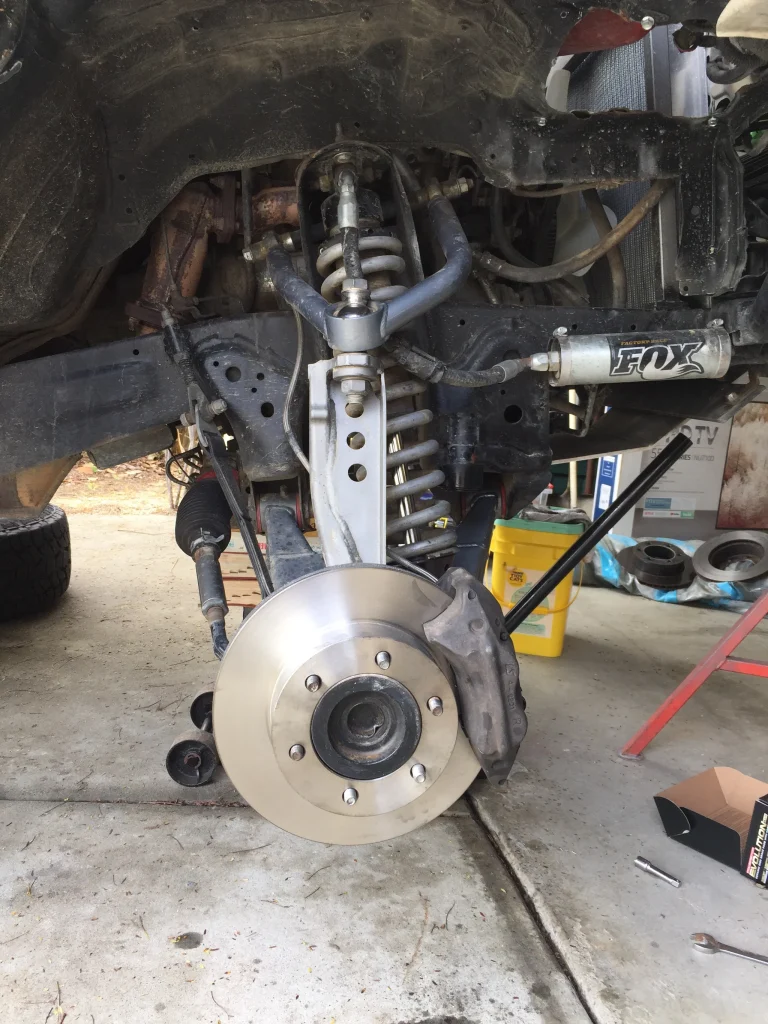
The rear suspension of off-road and performance vehicles is typically made up of tubular components such as control arms, sway bars, and axle mounts. TIG welding is also ideal for building and repairing rear suspension components because it produces clean, high-quality welds that are aesthetically pleasing.
TIG Welding In Support Equipment For Off-road and Performance Vehicles
TIG welding is an essential tool for the fabrication and repair of support equipment for off-road and performance vehicles. Support equipment for off-road and performance vehicles can include anything from roll cages, bumpers, skid plates, and exhaust systems. When building or repairing these components, TIG welding is often used to join the various pieces of metal together.
Potential Issues When TIG Welding Modern Off-road And Performance Vehicles
While Tungsten Inert Gas (TIG) welding is an excellent method for welding modern off-road and performance vehicles, there are still potential issues that can arise during the welding process. Some of the common issues that welders may encounter when TIG welding these types of vehicles include:
- Contamination: TIG welding requires a clean welding environment, free of contaminants such as oil, grease, and dirt. When welding off-road and performance vehicles, these contaminants can be present on the metal surfaces and can cause porosity and other defects in the welds.
- Heat input: TIG welding requires precise control of the heat input to ensure that the welds are strong and durable. When welding thin-walled tubing or sheet metal, it can be challenging to maintain the proper heat input without overheating the metal and causing distortion or warping.
- Fit-up: Proper fit-up is essential when TIG welding modern off-road and performance vehicles. If the parts are not properly aligned or clamped, it can lead to gaps in the welds, which can weaken the joint.
- Material selection: Choosing the appropriate filler material and welding parameters for the specific materials being welded is crucial to achieving high-quality welds. If the wrong filler material or welding parameters are used, it can result in weak, brittle welds that are prone to cracking or failure.
- Weld accessibility: Some areas of modern off-road and performance vehicles can be difficult to access, making it challenging to perform TIG welding. In these situations, alternative welding methods may need to be used, or the design may need to be modified to allow for easier access
Tips For TIG Welding On Off-road And Performance Vehicles
Here are some tips for TIG welding on modern off-road and performance vehicles:
- Proper preparation: Before beginning any welding, ensure that the metal surfaces are clean and free of contaminants such as oil, grease, and dirt. This will help prevent porosity and other defects in the welds.
- Proper fit-up: Proper fit-up is critical when TIG welding modern off-road and performance vehicles. Ensure that the parts are properly aligned and clamped to prevent gaps in the welds, which can weaken the joint.
- Choose the right filler material: The filler material should match the strength and properties of the base metal. This will ensure strong and uniform welds that are less prone to cracking or failure.
- Proper heat input: TIG welding requires precise control of the heat input to prevent overheating and distortion of the metal. Adjust the heat input and travel speed to achieve a clean and strong weld.
- Use appropriate welding techniques: Techniques such as back-purging can help prevent oxidation and porosity in the welds. Additionally, welding in short intervals and allowing the metal to cool between welds can help prevent overheating and distortion.
- Weld accessibility: In some areas of modern off-road and performance vehicles, access for welding can be challenging. Consider alternative welding methods or modifying the design to allow for easier access.
- Practice and experience: TIG welding requires skill and experience to achieve high-quality welds. Practice on scrap metal and seek out opportunities to gain experience in welding modern off-road and performance vehicles.
By following these tips, TIG welding on modern off-road and performance vehicles can result in strong, durable, and visually appealing welds that meet the demands of high-performance and off-road driving.
Conclusion
TIG welding plays a vital role in the modern automotive industry, particularly in the fabrication and repair of off-road and performance vehicles. TIG welding offers several advantages over other welding methods, such as precise control of heat input, minimal distortion, and excellent weld quality. However, welders must be aware of potential issues, such as contamination, fit-up, and material selection, and must take appropriate measures to address these issues. By following best practices and utilizing the proper techniques, TIG welding can result in strong, durable, and visually appealing welds that meet the demands of high-perf
Resources:
- https://www.motortrend.com/how-to/ctrp-9910-mig-and-tig-welding-basics/
- https://www.millerwelds.com/resources/article-library/motorsports-welding-and-racing-guide
- https://www.atikautomotive.com/en/technologies/tig-welding/
- https://performancecarsspecialist.co.uk/welding/
- https://www.hpacademy.com/courses/practical-tig-welding/
- https://anonymousfab.com/blogs/news/5-thhings-to-consider-when-welding-on-your-vehicle




